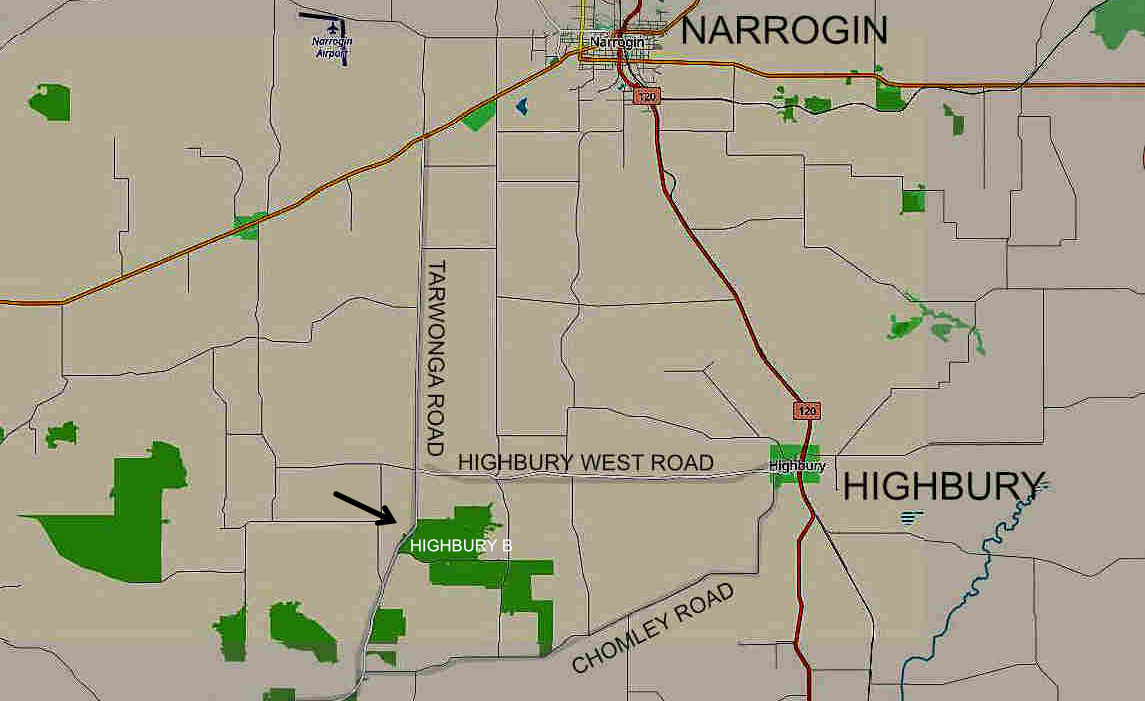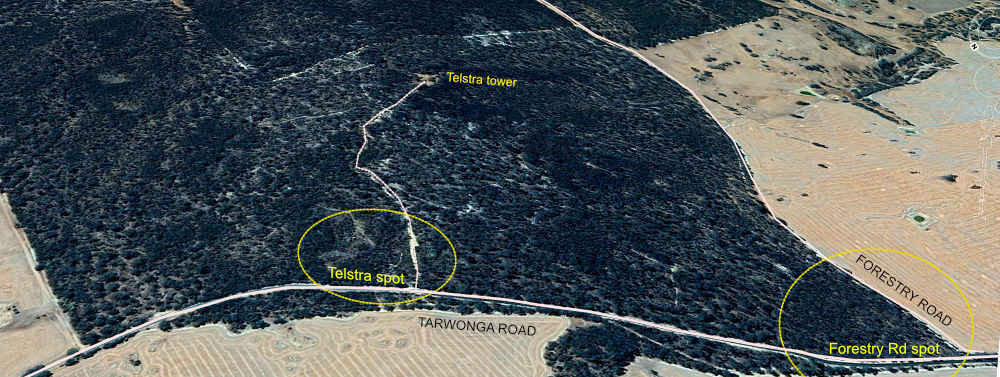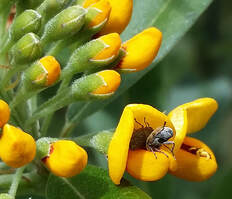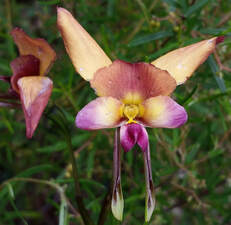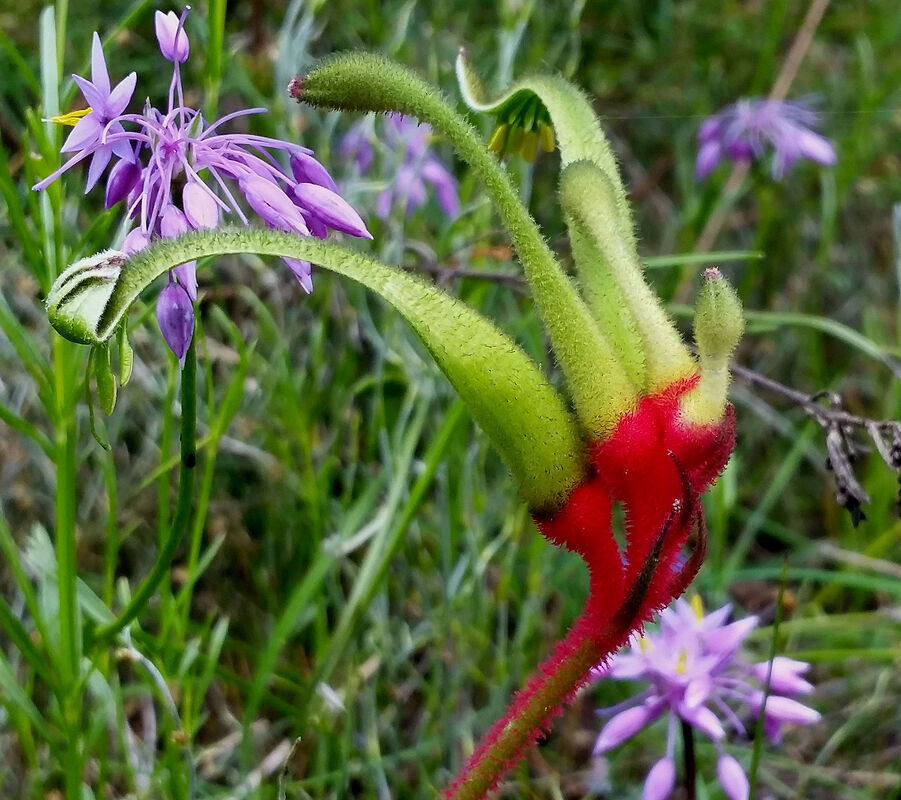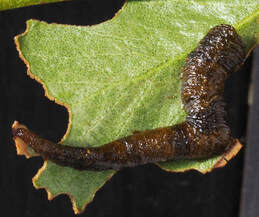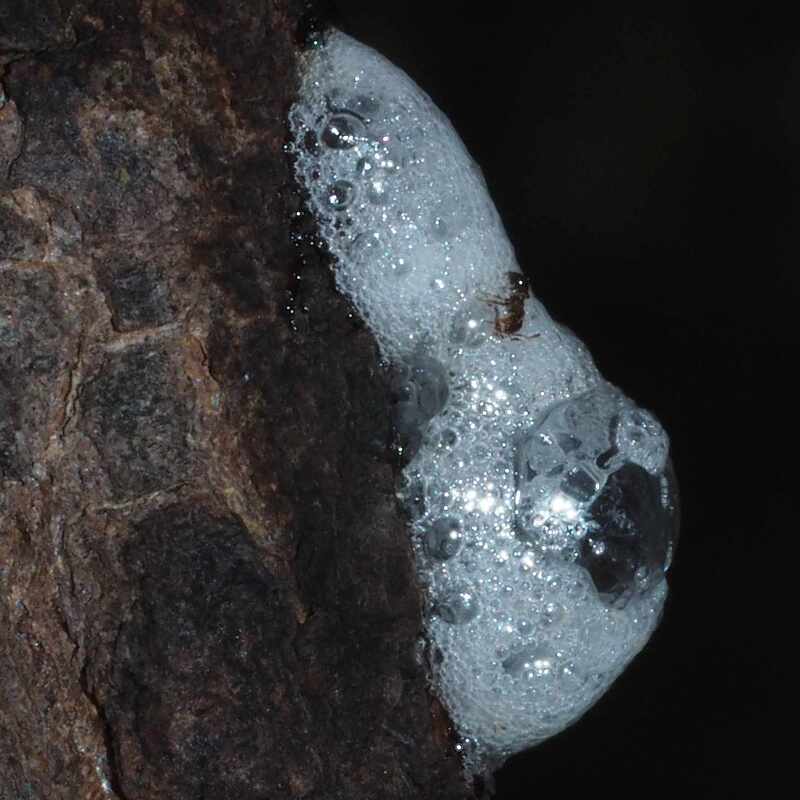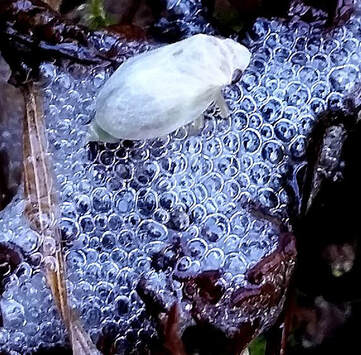| Greetings fellow Foxies, This is another one of the Dryandra Highbury outstation blocks that were reserved for brown mallet plantations by George Brockway (Read about him at Yilliminning Rock). A large block, it contains mallet plantations, the site where the district ranger and his family lived and manned the fire tower, and two of my favourite wildflower spots. |
Stop by the large granite rock on the right (‘Telstra spot’).
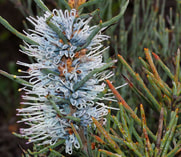 Hakea lehmanniana
Hakea lehmanniana The slope on the north side of the track has an attractive range of vegetation ranging from winter-wet low kwongan scrub on shallow sand over grey clay with larger plants and sheoak woodland where the sand is deeper. Good orchid country. Dotted in amongst this are lichen-rich low granite outcrops with rock pools and a beautiful but tiny red bladderwort (redcaps Utricularia menziesii) that I haven’t seen elsewhere in the Narrogin district
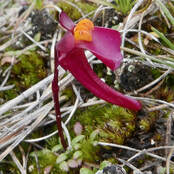 Utricularia menziesii
Utricularia menziesii There is an illegal trail bike track provided for you to walk on. Be sure to smile for Parks and Wildlife hidden cameras that may be installed to catch trail bikers and illegal woodcutters
This is a water gaining spot with a wonderful show of orchids and other wildflowers in October. Of note is the tall late October flowering heart leaf poison Gastrolobium bilobum. This is the only spot in the district that I have found this poison, but it was more common in early settlement days because it was common in granite soil country that was favoured grazing country for early settlers. The lovely Pustkuchen ruin near here was abandoned because there was such a huge germination of this poison after a wildfire on the land that the owners abandoned the farm.
Look carefully on the eastern edge of the poison to find silky blue orchids, Cyanicula sericea, purple pansy orchids Diuris longifolia, and a few little kangaroo paws Anigozanthus bicolour.
The mixed display of everlastings and other spring flowers is delightful
For more images click individual images in this Google photos album
